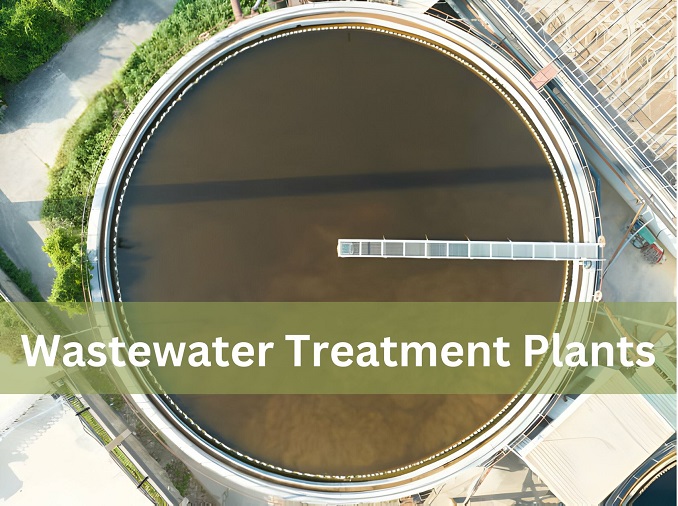How Clarifier Systems Work in Modern Wastewater Treatment Plants
Wastewater treatment is a complex yet essential process that protects public health and preserves the environment. Among the critical components...

Wastewater treatment is a complex yet essential process that protects public health and preserves the environment. Among the critical components of modern treatment plants, clarifier systems stand out as indispensable. These systems ensure the removal of suspended solids, oils, and scum from wastewater, enabling cleaner discharge and more efficient downstream treatment processes.
In this blog, we’ll explore the role, types, working principles, and benefits of clarifier systems in today’s advanced wastewater treatment facilities.
What is a Clarifier System?
A clarifier is a sedimentation tank used to remove solid particulates or suspended solids from liquid through gravitational settling. As wastewater flows into the tank, heavier solids settle at the bottom as sludge, and lighter materials, like oils and grease, float to the top. The clarified water in the middle can then move on to the next stage of treatment.
Clarifiers are used in both primary and secondary treatment stages and play a pivotal role in enhancing water quality and process efficiency.
Types of Clarifier Systems
There are two primary types of clarifiers used in wastewater treatment plants:
1. Primary Clarifiers
These are typically installed after the initial screening process. Their main function is to remove settleable organic and inorganic solids, as well as floating materials such as grease and oils.
2. Secondary Clarifiers
These are used after biological treatment (like the activated sludge process). Their purpose is to separate treated water from the biological sludge, returning part of the sludge to the aeration tank and removing excess sludge from the system.
Depending on design and application, clarifiers can be further classified as:
- Circular Clarifiers: Featuring a radial flow pattern, often seen in larger plants.
- Rectangular Clarifiers: Linear flow design; ideal for plants with space constraints.
- Inclined Plate Clarifiers (Lamella): Compact units that increase settling area, ideal for limited-space installations.
Components of a Clarifier System
To function effectively, clarifier systems are made up of several key components:
- Inlet Zone: Distributes incoming flow uniformly to minimize turbulence.
- Settling Zone: The central part of the tank where solids settle.
- Sludge Hopper: Collects settled solids at the bottom.
- Scum Removal System: Skims floating materials from the top.
- Effluent Trough: Collects and channels clarified water out of the tank.
- Sludge Scrapers (Mechanized): Continuously move sludge to the hopper for removal.
Modern clarifiers may also be equipped with sensors, automation controls, and chemical dosing systems for improved efficiency.
How Clarifier Systems Work
The process inside a clarifier is relatively simple in theory but highly engineered in practice.
Step 1: Influent Distribution
Wastewater enters the clarifier via the influent well or pipe. The flow is slowed down to reduce turbulence and allow gravity to take over. The inlet zone ensures even distribution of water across the tank.
Step 2: Sedimentation
As the wastewater flows slowly through the tank, gravity causes suspended solids to settle at the bottom. The shape and size of the tank, along with the flow rate, influence how effectively solids settle.
Step 3: Sludge Collection
Settled solids form a sludge layer at the tank bottom. Mechanical scrapers continuously push the sludge toward the sludge hopper, from where it’s removed for further treatment or disposal.
Step 4: Scum Removal
Lighter particles, oils, and fats float to the top of the tank. These are removed using surface skimmers and collected in scum troughs.
Step 5: Effluent Discharge
The clarified water, now free of large solids and floating debris, flows over weirs into the effluent troughs. From here, it moves to the next stage of treatment—usually filtration or disinfection.
Importance of Clarifier Systems in Modern Plants
In today’s wastewater treatment processes, efficiency, environmental compliance, and sustainability are top priorities. Clarifier systems support these goals by:
- Reducing Load on Downstream Processes: Removing solids early on helps protect pumps, membranes, and filters.
- Improving Treatment Efficiency: Better sedimentation leads to higher quality effluent.
- Enabling Sludge Management: Collected sludge can be treated for biogas generation or used in agriculture.
- Supporting Regulatory Compliance: Meeting strict discharge standards requires high-performance clarification.
Design Considerations for Effective Clarification
When designing or selecting a clarifier system, several factors must be considered:
- Flow Rate: The system must be sized to handle maximum inflow.
- Tank Geometry: The shape and depth affect settling time and efficiency.
- Retention Time: Longer retention improves settling but requires more space.
- Sludge Characteristics: Sludge density and settling velocity must be considered.
- Climate: Outdoor clarifiers in cold climates may need covers or heating elements.
- Maintenance Access: Easy access is essential for routine inspection and cleaning.
Advanced Clarification Technologies
Modern wastewater treatment facilities are adopting advanced clarifier designs to meet growing demands. Some of these include:
- Lamella Clarifiers: Use inclined plates to maximize settling area in a small footprint.
- Tube Settlers: Similar to lamella but use tubular channels to enhance sedimentation.
- Ballasted Flocculation Systems: Combine chemical coagulants and micro-sand to speed up settling.
- Membrane Clarifiers: Use membranes along with traditional clarification for ultra-fine filtration.
These technologies offer higher efficiency and are ideal for industrial wastewater treatment or plants with limited space.
Operation and Maintenance Best Practices
Efficient clarifier operation depends on routine monitoring and maintenance. Some best practices include:
- Regularly inspect scrapers, skimmers, and effluent weirs
- Monitor sludge blanket levels to avoid carryover
- Calibrate flow meters and sensors
- Clean scum troughs and sludge hoppers periodically
- Check for signs of wear or corrosion in mechanical parts
Automated systems can provide real-time monitoring, helping operators optimize performance and reduce manual workload.
Why Choose the Right Partner?
Installing or upgrading clarifier systems is a significant investment. It’s essential to work with an experienced partner who understands your wastewater characteristics and regulatory requirements.
Cleantech Water, a leading provider of wastewater treatment solutions, offers end-to-end services—from system design and fabrication to installation and maintenance. With a focus on innovation and sustainability, Cleantech Water ensures that your clarifier systems are efficient, reliable, and compliant with industry standards.
Conclusion
Clarifier systems are a cornerstone of modern wastewater treatment plants. By effectively removing solids, oils, and scum, they protect downstream equipment, enhance treatment performance, and support environmental compliance. Whether you’re dealing with municipal sewage or industrial effluent, a well-designed clarifier system can make all the difference.
Understanding how these systems work—and investing in quality equipment and expert support—ensures your treatment plant operates efficiently and sustainably for years to come.



